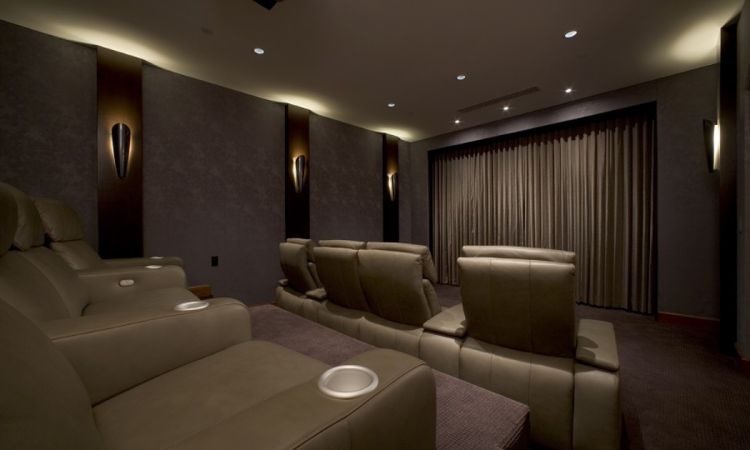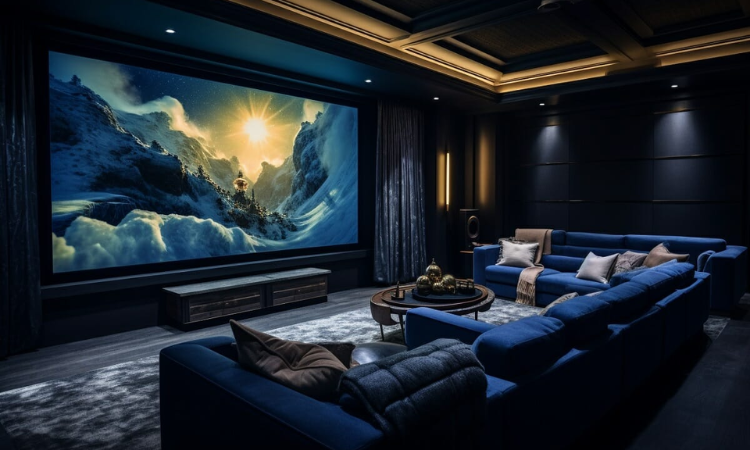As a home theater designer with over 10 years of experience, I’m always exploring the latest technologies and design tools to stay on the cutting edge. In 2024, home entertainment systems will become more immersive, integrated, and automated than ever before. As an early adopter, I’ve had the chance to test out some exciting new tools that will change how home theaters are designed.
In this article, I’ll share my hands-on experience with four innovative technologies that every home theater designer should know about augmented reality design apps, acoustics simulation software, 8K display tech, and smart control systems.
Augmented Reality Design Apps
Augmented reality (AR) allows you to visualize virtual objects in the real world using a mobile device. AR design apps like Hoomvu take this to the next level by letting you map out an entire home theater within the actual room.
I recently used Hoomvu to demo theater layouts for a client remodeling their basement. Instead of looking at 2D drawings, the client could walk around the unfinished space and see photorealistic renderings of the proposed screen, seating, speakers, etc placed in life-size. Being able to showcase different configurations in situ made it much easier for them to make design decisions.
As well-versed as I am with reading floor plans, nothing beats being able to overlay our designs directly in the physical environment. The AR app saved countless revisions by identifying spacing issues early in the process. Plus, it wowed the client!
Acoustics Simulation Software
Fine-tuning the sound quality of a home theater requires accounting for the acoustic properties of the room itself. New simulation programs like Anthony Gallo’s Sound Acoustics Software take the guesswork out of speaker positioning by modeling how audio will propagate throughout the space.
Recently, I used this software while working on a basement theater with an unusual wedge-shaped layout. After inputting the room dimensions and building materials, I was able to test different subwoofer placements to minimize standing waves. The before and after acoustic models showed clearly how corner-loading the subs would cause problematic bass peaks.
Armed with the simulation data, I designed a calibrated 7.2.4 Dolby Atmos system with superb frequency response free of resonances. The client was stunned by the clarity and realism achieved, which would not have been possible without the acoustics software.

8K Display Technology
Resolution defines the level of fine detail a video display can reproduce. While 4K UHD screens have become commonplace, 8K displays with four times more pixels deliver the ultimate viewing experience for a home theater.
I was honored to be among the first designers to work with Sharp’s 8M-B8K 8K monitor. It packs an astonishing 7680×4320 pixels into an imposing 88-inch screen size. Pairing the cutting-edge display with an 8K-capable AV receiver and media player. It gave me my first taste of the clarity possible from native 8K content.
As close as I sat to the screen, I could not discern any visible pixels or artifacts. It was like looking through a window. The text was perfectly smooth and the images had a depth and realism that had to be seen firsthand to fully appreciate. 8K home theater is no gimmick; it’s the new reference standard for performance that will soon be more accessible.
Smart Control Systems
Connecting and controlling all the technology in today’s luxury home theaters requires increasingly sophisticated automation systems. While Crestron has long been the gold standard. Savant’s Pro Host software represents the next evolution with its intuitive voice control integration.
I was thoroughly impressed by the natural language processing capabilities when I programmed a demo theater using the Savant platform. Through a single voice assistant device like Google Home, the entire system – lighting, shades, video, audio, climate, and security – could be effortlessly operated.
No longer confined to pre-defined commands, automation becomes far more flexible when you can simply say what you want and have the Savant’s brain interpret requests to enact the desired actions. This allows every component in a home theater to be tapped into as needed. Smart control systems like this are rapidly becoming expected rather than exceptional.
The Future of Home Theater Design
It’s an exciting time to be designing home theaters! As these examples of new tools illustrate, technology is empowering designers to craft more immersive and personalized entertainment spaces for our clients. AR apps, simulation programs, and advanced display/automation options let us work smarter while achieving new heights of quality.
Of course, technological prowess alone does not guarantee success. With almost 20,000 hours logged so far over my decade-long career. The hands-on experience in identifying client needs and transforming them into reality cannot be replicated. If you have a vision for your perfect home theater. I would welcome the opportunity to make it a reality with both art and science.
Let me know in the comments if you have any questions about these emerging home theater technologies or the design process in general!
Also Read – Incorporating 2024 Modern Trends into Your Home Interior Design

Kumar Tomar is a distinguished writer at DesignHomes.in, specializing in home design and interior decor. Holding a degree in Interior Design from the National Institute of Design, Kumar combines formal education with practical experience to deliver insightful and authoritative content. With over 8 years in the industry, he is known for his in-depth knowledge of design trends and his ability to provide actionable advice for homeowners. Kumar’s expertise and dedication to high-quality writing make him a trusted resource for those seeking to enhance their living spaces. Follow Kumar on Instagram for the latest design inspiration and tips.
